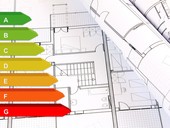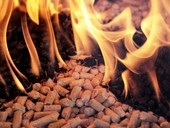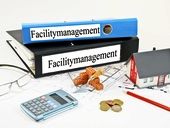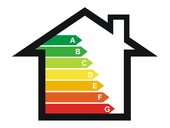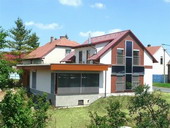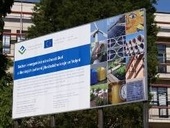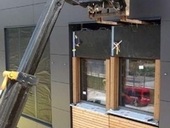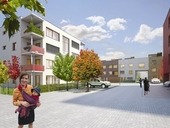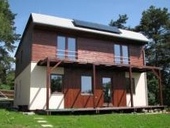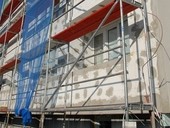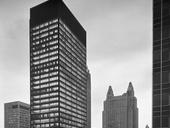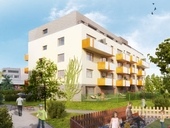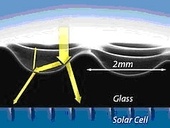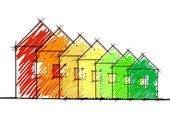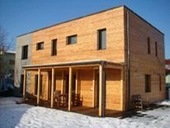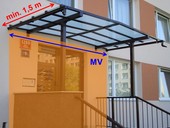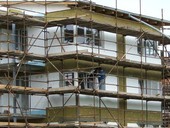Cost-optimal levels of Member States, to be set according the comparative methodology framework of the European Commission Delegated Regulation 244/2012 and the guidelines accompanying Delegated Regulation to national parameters. European Commission makes the claims for all Member States to report on about cost-optimal levels for their particular country and compare them with national requirements were based on regulations.
Archiv článků od 3.11.2014 do 4.1.2016
In this article is focused on the user's possibilities of the influence of the building value associated with the leife cycle. On the example of building a house techniques are utilized facility management. Designed there are four deigned variants for which are calculated itemized budgets, the energy consumption of the building and other cost of life cycle of the building. At the end of there are these variants compared and the result implies which one is the most suitable for a future user.
The introduction of energy management according to ČSN EN ISO 50 001 becomes a topic that attracts more and more attention of involved people nowadays. There are two reasons for that. The first one is the possibility of obtaining a higher subsidy from the OP PIK, the second is the obligation by the law, respectively the possibility of reducing the administration in the future.
The last time we meet with the requirement to improve energy efficiency practically every step, as a result of the implementation of Directive 2012/27/EU into our legislation. The purpose of this regulation is to cause such changes in society and in the energy sector to increase energy efficiency in 2020 by 20% and created the conditions for its further growth in the longer term. The most important area in terms of energy consumption includes heating of buildings.
The article deals with basic knowledge about the thermal storage mass of energy passive buildings in relation to the summer thermal stability under the climatic conditions of Central Europe. Article lightly touches on the issues of heat storage of buildings with lightweight construction system like a modern sandwich wooden houses.
The recast of the Directive on Energy Performance of Buildings defined all new buildings will be nearly zero-energy buildings by the end of 2020. However, the transformation of the EU’s building stock will not be completed until well after 2020 and this target can only constitute an intermediate step. The renovation of existing buildings stock offers significant potential for both cost-effective CO2 emissions mitigation and substantial energy consumption reduction. Therefore energy efficiency can be seen as Europe’s biggest energy resource. The cost optimal methodology may be a useful tool able to identify the more appropriate retrofit measures in order to launch the renovation of the existing building stock on a large scale.
The paper deals with complex solution of heating and economy measures regarding ecology of heat sources and preservation of architectural values of the Volyně college-complex. This solution also includes padding warm and exchange of windows in all complexes. New technology in boiled room was installed with application of boiler for fytomass-burning, gas condensation boilers, thermal pump in system air/water and cogeneration unit for supply electric energy.
This paper describes an own development of a curtain wall panel system. The leading idea of the project was to prepare an alternative solution for replacement of old metallic curtain walls during the refurbishment of nonresidential buildings from the 1960ies – 1970ies. Presented solution use wood and wood based materials (laminated veneer lumbers) for construction of panels, with clear preference to non-oil based materials for thermal insulation. System allows for different type of external cladding (cement based boards, wooden claddings, integrated PV, support for greenery). Integration of other technical components, like venetian blinds, decentralized ventilation units, is possible. Thermal performance, noise protection and fire safety of this new envelope together with environmental oriented assessments are discussed.
In 2013, the World-Green-Building Council (WGBC) made a study to address the influence of sustainable buildings on the international real estate market. In the study, it was revealed that in comparison to normally-built buildings, sustainable buildings
- have a higher selling value
- are rented at a higher price
- can be used more widely.
There are certification systems used to evaluate quality and sustainability of buildings. Besides already renowned systems, e.g. BREEAM and LEED, others have started gaining popularity, for instance DGNB (Deutsche Gesellschaft für Nachhaltiges Bauen) and BNB (Bewertungssystem Nachhaltiges Bauen) in Germany. In the Czech Republic, SBToolCZ (Sustainable Building Tool CZ) was introduced by the Faculty of Civil Engineering of Czech Technical University in Prague in 2010. As part of this study, created on the basis of cooperation between Hochschule Zittau/Görlitz and Czech Technical University in Prague, the BNB (partially similar to the DGNB system) and SBToolCZ systems were compared on an office building.
Paper introduces the energy study for old building retrofit for future Centre of Low Energy Buildings in Pisek. Design of the energy efficient buildings with nonuniform user structure (combined residential, administration and technology use) requires the detailed dynamic simulations of buildings and energy system to develop the optimum concept meeting the comfort demand on one side and energy efficiency on the other side with minimized investment costs. Energy study of building retrofit for the Centre has shown how important could be knowledge on future building use in the design stage and has clarified the questionable issues for further design process (high fraction of fan power on electricity demand, suitable extent of PVT collectors use, optimum storage capacity for heat and cold and its cost benefit).
The article deals with the issue of economic accessibility of energy-saving buildings; respecting the possibility of financial support from the National programme “Nová zelená úsporám” (New green savings programme, abbr. NZÚ). The purpose of the article is to disprove some of the incorrect interpretations and myths connected with this topic. It point out the good practice examples of a high-quality projects preparation, their successful submission into “New green savings programme” and following realization. Article aims either at lay or professional reader.
There are two possibilities how to place the ETICS on the market of the Czech Republic in this time – the national and european certification. Against the european certification valid all over the European Union the national one entitles manufacturer to sell the product just in Czech Republic territory. This contribution further mentions the basic specifics for each type of these certification processes.
The developed world consider the concept of intelligent building as a synonym for well-designed, built and functional building, which fully meets the requirements of operators, users and particularly satisfying residents of the building themselves. Of course, such a building is realized in high technology and equipped with advanced services and systems.
This is to introduce the energy passive residential building in the complex KOTI HYACINT, which is the first residential building in the Czech Republic that got certificate "Certified Passive House project" by the end of 2013. This project complies all the relevant internationally accepted criteria of Passive House Institute (PHI), headquartered in Darmstadt.
The goal of this paper was to inform about the development of the building integrated photovoltaic thermal (PV-T) system and evaluate its performance in compared to PV installation built of same photovoltaic cells. The study was collaboration among the Technical University of Denmark (DTU and Danish company RAcell (end-reference to website). This project was applied and optimized with the coupled house system on FOLD house, built in purpose of international student competition Solar Decathlon Europe 2012 held in Madrid in September 2012. The proposed PVT system was awarded with first price in Solar system integration sub-contest, during the competition SDE 2012.“Highly effective and innovative integration of PV and thermal systems that is not only a machine added to a house, but added value without creating too much attention to that machinery,” said one of the jury members about the PVT system, announcing the winner.
The PV-T is a hybrid system where the significant growth of efficiency of electricity generation is caused by cooling the cells to optimal temperature by system of embedded pipes on the backside of photovoltaic panels. The thermal part removes the heat, cools down the cells and increases its el. production up to 14,8 % according to PV system using the same cells in the same weather conditions. New solution was carried out for piping connection between panels. The house integrated PV-T system was compared with separate Photovoltaic and Thermal systems from energy and economy point of view. For annual usage of the FOLD house in Spain and Denmark was the PV-T system found as a more beneficial in compare to two separate systems.
From a functional point of view is mechanical ventilation the only system that gives the guarantees necessary exchange of fresh air, which is necessary in spite provide fresh air in a given time and quantity. The advantage of this method is the possibility of air exchange energy-saving solution - first option controlled exchange according to the needs of individual spaces, which excludes excessive ventilation, secondly the possibility of installing ventilation heat recovery that often uses more than 80% efficient heat from exhaust air for preheating fresh (no mixing). In the case of radon risk would be appropriate to prescribe these systems.
This paper deals with investigation of the relationship between calculated and on-site measured values of energetic parameters in a zero house built in Slovakia. Energy consumption of a zero house is currently being discussed and examined from the viewpoint of energy consumption and comfort of the house residents. The paper investigates the differences between the results of simulation models and calculated values and real data on consumption. All the values are compared to the values measured by DTHL Klima Logger device and Wohler CDL 210 device to measure levels of CO2, and the data taken from a heat pump and a recuperation unit related to the residents’ behaviour records. The results show that energy consumption was influenced significantly by residents’ behaviour, setting of inner temperature besides airtightness of the outer envelope and window fillings. Based on the research results the construction of a zero house can be considered a standard option in conditions of Slovakia.
In the first part of the article were presented general fire protection requirements for External Thermo Insulation Composite Systems (ETICS), for new buildings and existing buildings. The second part will focus on atypical modification due to fire protection of the facade with combustible thermo insulating material, as well as the latest changes in legislation of fire protection and another context.
ETICS for buildings is a key modification to reduce their energy consumption. Where and under what conditions it is still possible to use flammable thermal insulator, or with such modifications and where it is already necessary nonflammable insulator? Fire standards define different requirements for thermal insulation of new buildings from the requirements for additional insulation of older existing buildings for which they are allowed a certain structural exceptions.
zpět na aktuální články
